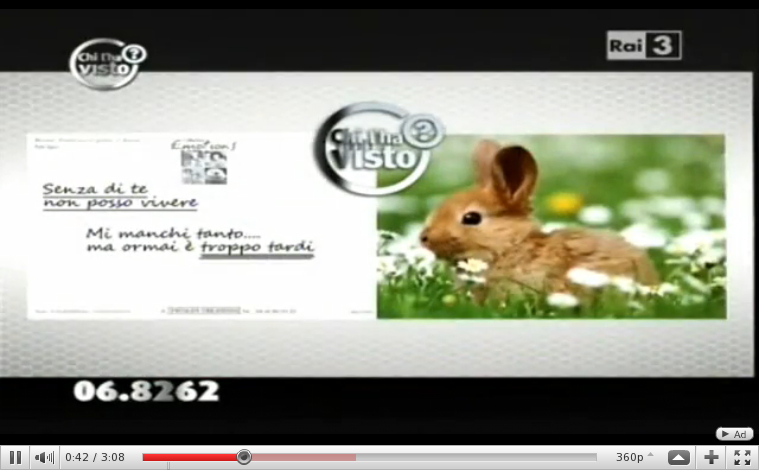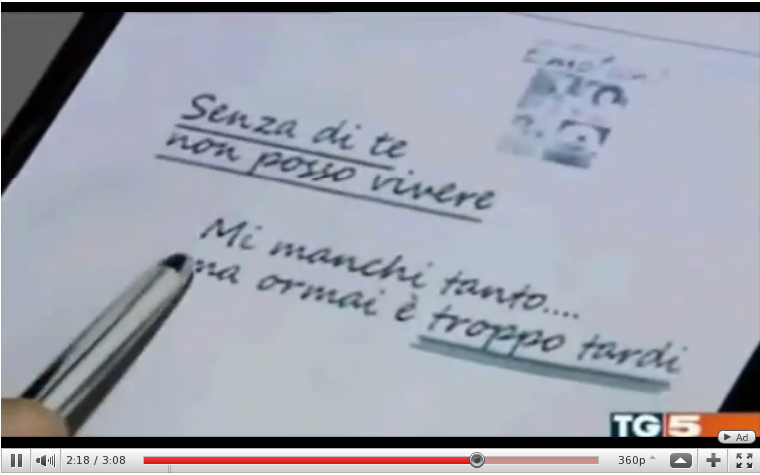This happened in February 2011 but I only discovered it this week, when other Italian media resurrected the story, and it’s too good, or too serious, not to give it the greatest possible exposure.
The background story is a real tragedy. Here’s an approximate, one paragraph summary: on Jan. 30th, 2011, Matthias Schepp left his home in Switzerland with his 6-year-old twins Alessia and Livia. After passing through Marseille and Corsica he arrived to Cerignola, Southern Italy, where he committed suicide by jumping (alone) under a train on February 3rd. While I’m writing this, nobody knows yet what happened to the girls, and where they are. More details are summed up here and here.
The real farce (for lack of a better word) that followed, and is the actual topic of this post, happened a couple of weeks later.
Italian TV show “Chi l’ha visto?” (“Who saw this person?”) routinely covers cases of missing people, asking the public at home to help find them. On February 16th, 2011, “Chi l’ha visto” dealt with the Schepp case. They showed the last postcard that Matthias Schepp had sent to his wife from Marseille, which carried these italian sentences:
Senza di te non posso vivere
Mi manchi troppo...
ma ormai è troppo tardi
Translation: “I can’t live without you. I miss you too much… but it’s too late now”

As it’s totally obvious from the snapshot, what “Chi l’ha visto showed was a mockup, without any intention to seem real: first of all, Schepp wrote in German, not italian. Next, there is no stamp on the postcard. Finally, the writing is simply too regular to be handmade. In fact, it’s rendered with the Segoe script font.

FREERF OK, you’ll say, but where’s the farce? Here it is: a few days later that “Chi l’ha visto” episode, national TV network Canale 5 called in its evening news show (TG5) graphologist Candida Livatino, to perform a live graphological analysis… of that computer writing. I couldn’t hear the audio myself because my audio card is broken, but I read a synthesis on Italian newspaper Il Fatto Quotidiano.
According to that newspaper, Mrs Livatino concluded that the Segoe script font (because of course her conclusions can’t apply to Schepp, if she draw them from the Chi l’ha visto mockup) suffers of “latent aggressivity” and routinely “suppresses its feelings”.
I’ll stop here. What else could I say? You can see the analysis by yourself here and here. Even if you don’t understand italian, you’ll enjoy every second.